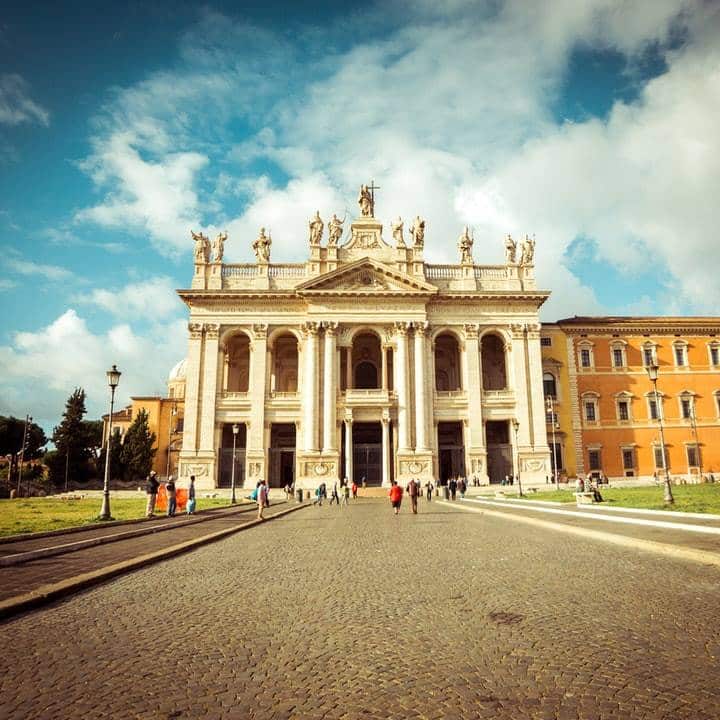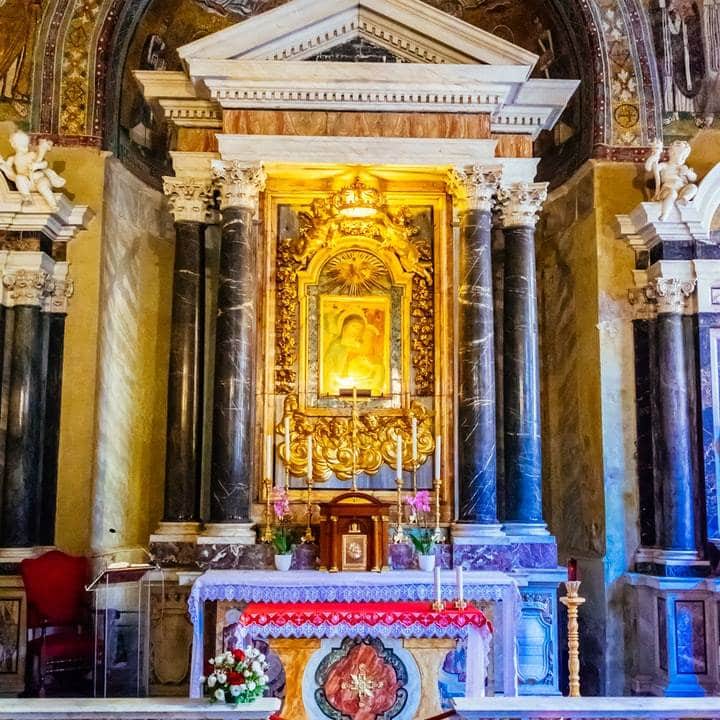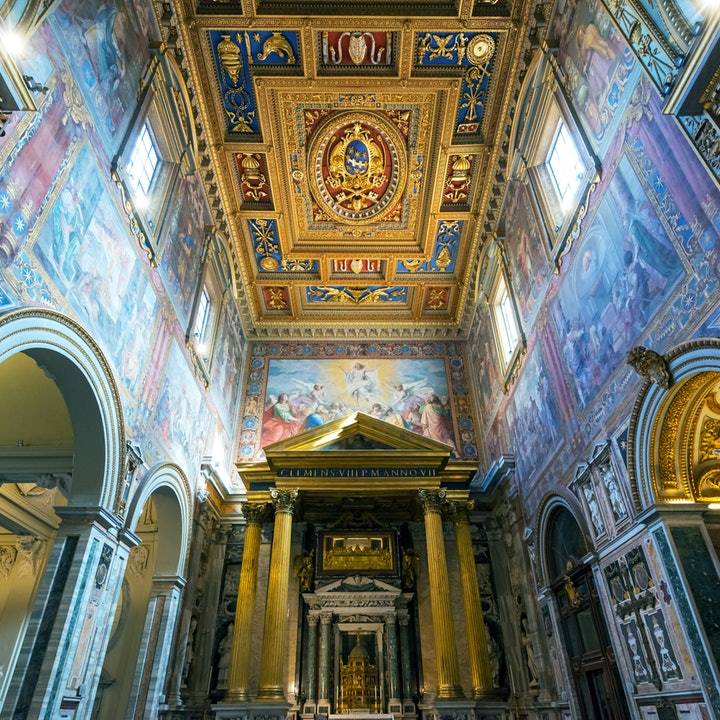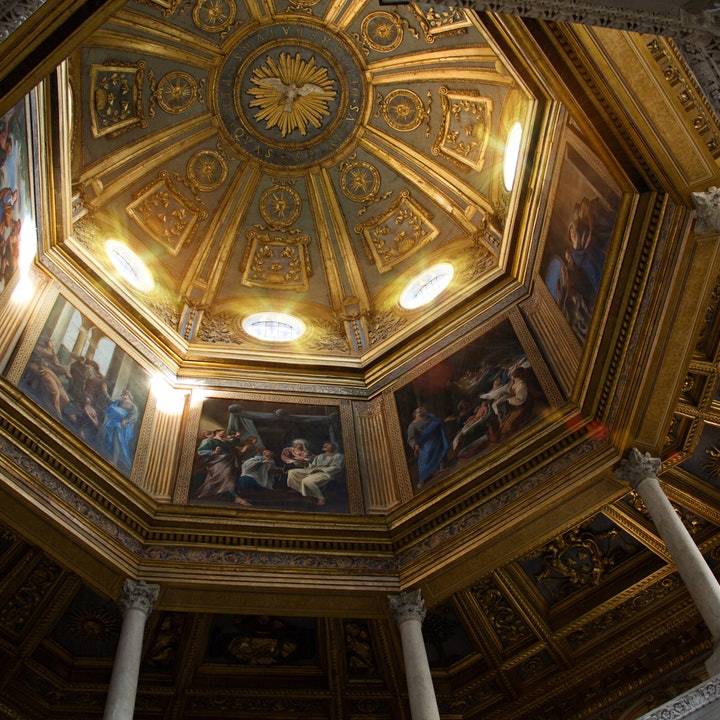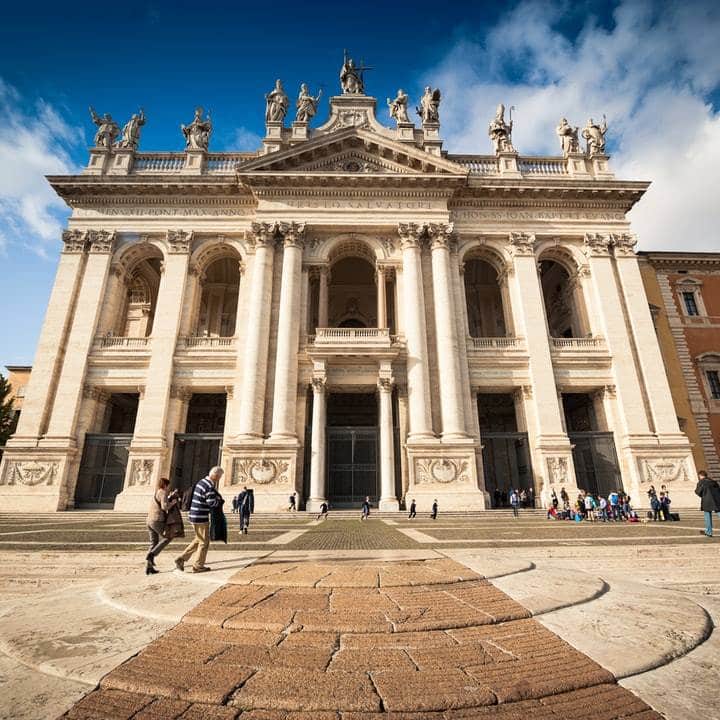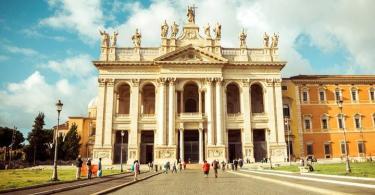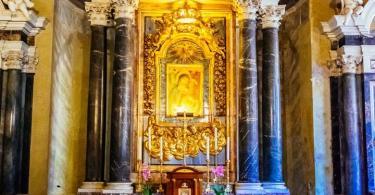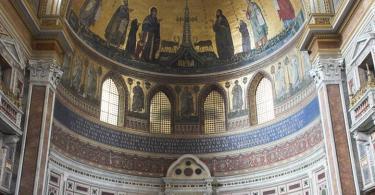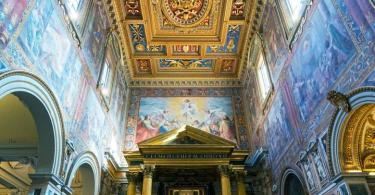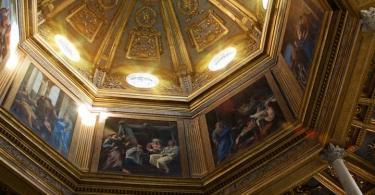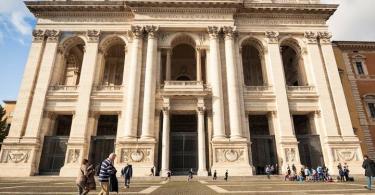26 Reviews
from €7.00 EUR
Duration: 90 Min.
Seller: Tiqets
Basilica of St. John Lateran was recovered in the 1700s and is amazingly decorated in different styles. There are enormous mosaics portraying scriptural scene, larger-than-life marble statuaries, a gothic altar and Renaissance artwork.
The Archbasilica of St. John Lateran, sometimes overshadowed by its more famous Roman neighbors, is one of the most historically significant churches in the world. Recognized as the oldest basilica in Christianity, it predates even St. Peter’s Basilica, and its majestic architecture and artistic treasures offer profound insights into the rich tapestry of Rome’s religious and cultural heritage. Whether you’re a devout pilgrim on a spiritual journey, a history aficionado eager to trace the roots of early Christianity, or simply a curious traveler wanting to broaden your cultural horizons, the Archbasilica of St. John Lateran is an essential stop on your Roman itinerary.
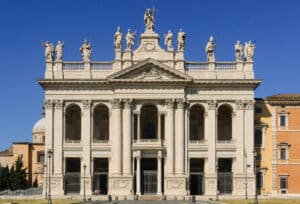
Basilica of St. John Lateran
Why Visit the Archbasilica of St. John Lateran?
The Archbasilica of St. John Lateran stands out not only for its remarkable origins—tracing back to the 4th century under Emperor Constantine—but also for its status as the Pope’s official cathedral, earning it the revered title of “Mother Church” among Roman Catholics. As you approach, the monumental façade designed by Alessandro Galilei immediately commands attention, adorned with colossal statues of Christ, John the Baptist, and John the Evangelist that hint at the splendor within.
Once inside, you’ll discover a towering nave lined with stately columns and intricate frescoes, while breathtaking mosaics and richly adorned chapels showcase the evolution of Renaissance and Baroque art. Despite its grandeur, the basilica maintains a profound sense of solemn devotion, offering a tranquil atmosphere that encourages reflection and spiritual connection. Whether you’re seeking an immersive historical journey, a captivating exploration of religious art, or simply a peaceful retreat within the city, the Archbasilica of St. John Lateran provides a uniquely rewarding experience that lingers long after your visit.
Practical Information for Your Visit
Nestled in the Lateran district, the Archbasilica of St. John Lateran is only a short distance from the vibrant heart of Rome. This convenient location allows you to combine your tour with nearby historical sites such as the Holy Stairs (Scala Sancta) or the Basilica of Santa Croce in Gerusalemme. Once you step inside, you’ll find yourself in the Lateran passage; continue walking until you reach the ORP desk (Opera Romana Pellegrinaggi) on the left, where you can easily collect any pre-booked tickets by simply displaying them on your smartphone. This straightforward process lets you begin your exploration with minimal delay.
Like all major Roman churches, St. John Lateran observes a modest dress code, so it’s best to avoid sleeveless tops, shorts, or revealing outfits to respect the sanctity of the space. For a more relaxed visit, consider arriving in the morning when fewer crowds grace the basilica, allowing you to admire both the architecture and the sacred ambiance in relative quiet. If you wish to attend Mass, it’s wise to check the basilica’s official schedule in advance. Additionally, the site tends to be wheelchair-friendly, offering ramps and accessible entries; if you have specific concerns or require assistance, consulting the ORP desk or the basilica’s official website can help ensure a seamless experience. Finally, once you’ve immersed yourself in the basilica’s splendor, you might want to explore the Holy Stairs—revered by some as the steps Jesus once climbed in Pontius Pilate’s palace—and other nearby landmarks to fully appreciate the spiritual tapestry of Rome.
Enhancing Your Experience
For travelers who want to deepen their knowledge of the Archbasilica’s art, architecture, and profound history, guided tours often provide comprehensive insights into lesser-known stories and fascinating details. These narrated excursions can enrich your visit, turning a simple stroll through the nave into an engaging journey through centuries of Christian heritage. If you enjoy capturing memorable moments, photography is generally permitted throughout the basilica, though it’s prudent to watch for signs that may indicate areas where flash is discouraged to protect delicate artworks.
Another aspect that makes St. John Lateran particularly significant is its key role during Holy Years (Jubilees), when the basilica hosts special ceremonies and welcomes pilgrims from all corners of the world. If your trip coincides with one of these celebratory periods, you’ll witness a heightened spiritual atmosphere, replete with unique events and liturgies, providing an even more profound encounter with Rome’s sacred traditions.
The Archbasilica of St. John Lateran is more than a mere historical relic—it’s a living testament to Rome’s enduring spiritual and artistic legacy. From its origins in the early Christian era to its modern role as the Pope’s official cathedral, the basilica embodies the evolution of faith, art, and tradition. Whether you’re drawn here by curiosity, devotion, or a love for history, this monumental church will leave an indelible impression on your heart and mind.
- Audio guide in numerous languages,
- Accessibility to the Cloister and the Sancta Sanctorum,
- Accessibility to the Baptistery and to the Scala Sancta.
- Live Guided Tour.
Cancellations and changes are not possible for this ticket.
The district owes its name to a rich Roman family, the Laterani, who owned property here. At the beginning of the fourth century, the Emperor Constantine (312-337) founded the first basilica dedicated to St John, shortly after his victory over Maxentius.
He also constructed a palace which he gave to Pope Melchiades (311-314) for the establishment of Rome’s first episcopal see. It was from this seminal act in the history of Christianity that the Basilica acquired its status as the Mother Church, first among all others both in Rome and throughout the world.
The palace and church of the Lateran were the object of constant improvements, notably for Charlemagne’s coronation in 800. The district saw its finest days in the 1100s, when the need to accommodate the clergy led to the construction of numerous dwelling houses.
On returning from Avignon in 1377, however, Gregory XI (1370-1378) found his palace burned to the ground. He chose thereafter to live in the Vatican. From that moment, the Lateran lost its pre-eminence and its role as the centre of Christianity.
The present building was reconstructed by Domenico Fontana in 1586. It was in this somewhat chilly residence that the Lateran Treaty was signed in 1929, giving the pontiffs sovereignty over Vatican City and several extraterritorial’ properties – particularly the four ‘major’ basilicas of Santa Maria Maggiore, San Paolo fuori le mura, St Peter’s, and St John Lateran – as well as the summer villa at Castel Gandolfo among the Castelli Romani. St John Lateran has suffered a number of disasters.
Devastated by the Vandals in the fifth century, toppled by an earthquake at the end of the ninth, and then seriously damaged by the fire of 1308 which consumed the Lateran Palace, it was rebuilt on each occasion.
More than a score of popes worked tirelessly to restore this highly symbolic monument where innumerable councils were held during the Middle Ages.
The building’s present appearance results primarily from the reconstruction carried out in the Baroque period and the eighteenth century, when the facade was completed.
The Renaissance ceiling apart, the theatrical nave bears the stamp of Borromini, whilst the transept is a fine example of the Mannerist style. The Baptistery was also largely restored in the seventeenth century; in the time of Constantine, this was the site of all Christian baptisms in the city.
from €422.54 EUR (Group Price)
Duration: 6 Hours
Seller: Viator
23 Reviews
from €118.00 EUR
Duration: 3 Hours
Organized by: Welcome Italy
8 Reviews
from €315.00 EUR (per group)
Duration: 3 Hours
Organized by: MEA Tour & Events
from €289.00 EUR
Duration: 2 Hours
Seller: Viator
21 Reviews
from €79.00 EUR
Duration: 3 Hours
Organized by:Gray Line I Love Rome
79 Reviews
from €14.00 EUR
Seller: Tiqets
13 Reviews
from €55.00 EUR
Duration: 3.5 Hours
Seller: Tiqets
39 Reviews
from €42.00 EUR
Duration: 3 Hours
Organized by: Mea Tours & Events
46 Reviews
from €75.00 EUR
Duration: 2.5 Hours
Organized by: Fat Tire Tours
from €185.00 EUR
Duration: 3 Hours
Seller: Viator
43 Reviews


